Update from Cambodia: As I write this, I’m sitting at the Foreign Correspondent’s Club in Phnom Penh. It’s the day that participants of my annual Angkor Photo Workshop are out “working on their stories” and I have a chance to catch up on correspondence. Typically, I would be blogging about the ongoing workshop but I feel compelled to share some images and thoughts with you about an ongoing situation here in Cambodia.
Perhaps you’ve heard about the “mysterious illness” that has resulted in the deaths of about 70 children between the ages of 3 and 11 here. The news media started reporting the story about 2 weeks ago and there was quite a buzz about it. As it turns out, it wasn’t such a “mysterious” illness after all. Follow up news reports since the “outbreak” have clarified the situation. Here’s some info I pulled from WHO (World Health Organization)….
“Since April, 78 cases of the so called “hand-foot-mouth” disease have been reported in Cambodia according to WHO and the Cambodian Ministry of Health (MoH). It is the first time the disease has been reported in the country, causing the death of 64 children between 3 and 11 years old and sparking debate in medical circles.
The virus causing the HFMD disease in Cambodia is the Enterovirus 71 (EV 71), also known in Thailand, China and Vietnam to have caused millions of cases of the HFMD in the past few years. The Pasteur Institute based in Phnom Penh just started to research if the EV 71 observed in Cambodia has the same strain observed elsewhere in the region.”
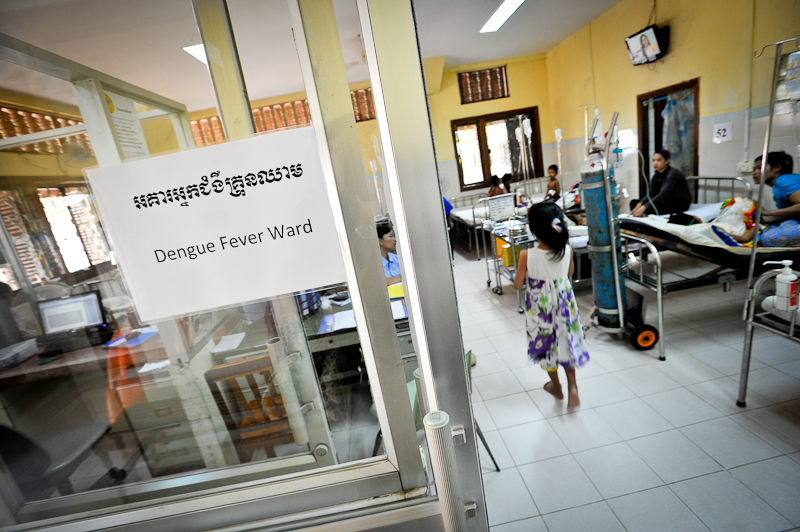
Anyway, since I was here in Cambodia, I contacted the Angkor Hospital For Children, for whom I’ve been shooting for many years. They immediately asked if I was available to shoot some photos of the current situation at the hospital. EV-71 is in the news, but the real emergency is a severe outbreak of Dengue Fever. Perhaps Friends Without A Border’s CEO, Christopher Hest, said it best in his recent email….
“Dear Friend of Friends and AHC:
We are experiencing a full-blown emergency associated with spiking levels of dengue fever in Cambodia. If you have known us for a year or longer, you know that every rainy season brings an uptick in dengue. This year’s version is much more intense, however, and is producing many cases of dengue hemorrhagic fever—an altogether bad thing.
Dengue hemorrhagic fever (DHF) is a syndrome caused by the mosquito-borne dengue virus. It tends to affect children under 10 most severely, causing abdominal bleeding, hemorrhaging, and circulatory collapse shock. DHF is spread in cyclical outbreaks, spiking every 4-5 years. This year’s numbers are peaking, and Angkor Hospital for Children (AHC) is straining its limited resources in order to cope with the drastic influx of children requiring both Inpatient and Outpatient care. (Currently, over 50% of the patients in the AHC Inpatient Department have the dengue virus.) In May alone, there have been two dengue-related deaths in young children, and the number is only expected to increase.
In the coming months, the staff at AHC anticipate up to 500 more dengue patients — almost double the amount of patients already treated. As staff work overtime, showing admirable commitment and resilience, AHC’s resources are being stretched thin. To keep pace with the outbreak, the hospital needs up to $75,000 in additional funding. Your generous support will help AHC continue to work around the clock to provide life-saving treatments to children afflicted by DHF.
AHC spends on average $290 per dengue patient from first admission to discharge from our facilities.
This cost includes salaries and overtime of doctors and nurses and cost of medicines and infection control at the hospital. In particular each child needs medicines (primarily IV fluids) that carry a cost of $82.” http://www.fwab.org/dengue

So, long story short….I’m doing this blog post because it’s timely, relevant and important and because, after all these years shooting for Angkor Hospital for Children I’ve come to understand the important role that they play for so many children here in Cambodia. Additionally, the fact that the hospital was started by a photographer whom I respect and admire really resonates with me. Here’s the story of Kenro Izu and how and why he started a hospital in Cambodia; an unlikely thing for someone who makes a living with a camera.
Kenro’s story is something that gives me perspective and helps me see the impact a person can make. If you’ve got a minute, have a look at this article, written my John Cantrell for Town & Country magazine, it will make you smile, it will make you think and it will likely inspire you too. The PDF file of the Town & Country article can be seen here: Town_Country But, before you have a look at that, scroll down through the following images that I shot at the hospital 3 days ago.
I’ve never seen Angkor Hospital so busy, they’ve got beds in the hallways and in a classroom that’s used for nursing education. The place is literally overflowing, and in addition to EV-71 and their normal workload, the Dengue Fever cases keep coming. I keep asking myself, if Kenro Izu had not taken it upon himself to start this hospital, what would happen to all these sick kids?
In the foreground, a mother in the waiting area holds her child while another passes a poster explaining the importance of good hygiene, as a way to avoid illnesses such as EV-71 virus. Unfortunately, good hygiene doesn’t prevent Dengue, as it is transmitted by mosquitoes.
An exhausted mother sits with her child, admitted to the emergency room, with EV-71. Once stabilized, the child will be moved to the regular ward.

An oral rehydration solution called “Pedialyte” is seen in the foreground.

Patients, parents and siblings fill the beds in the “Dengue Ward”.
 A concerned mother attends to her child in the emergency room.
A concerned mother attends to her child in the emergency room.
 A nurse checks on an EV-71 patient in the emergency room.
A nurse checks on an EV-71 patient in the emergency room.
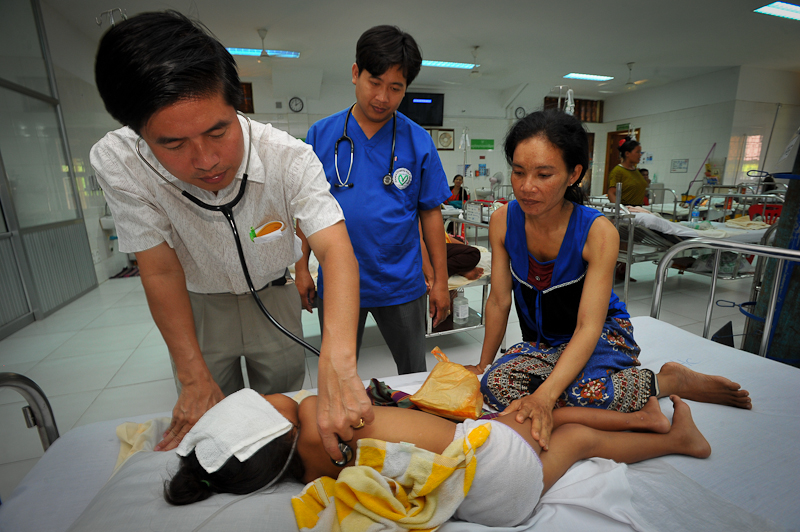 Angkor Hospital is staffed almost completely by Cambodian physicians. AHC was officially recognized as a teaching hospital by the government of Cambodia in 2005. They provide high quality training and education to hundreds of Cambodian nurses and doctors each year. In addition, AHC serves as a training site for the World Health Organization’s Integrated Management of Childhood Illnesses Program
Angkor Hospital is staffed almost completely by Cambodian physicians. AHC was officially recognized as a teaching hospital by the government of Cambodia in 2005. They provide high quality training and education to hundreds of Cambodian nurses and doctors each year. In addition, AHC serves as a training site for the World Health Organization’s Integrated Management of Childhood Illnesses Program
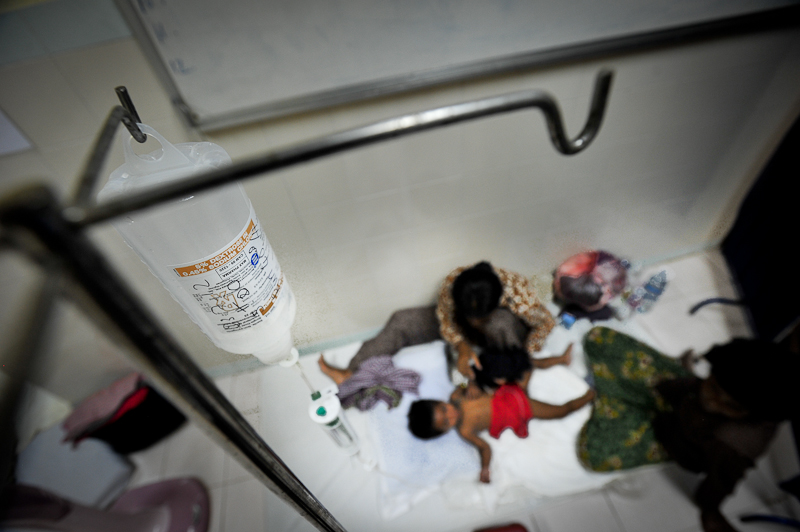 A patient on the floor, in one of the hallways, receiving IV fluids
A patient on the floor, in one of the hallways, receiving IV fluids
Thanks for reading. Cheers, Karl


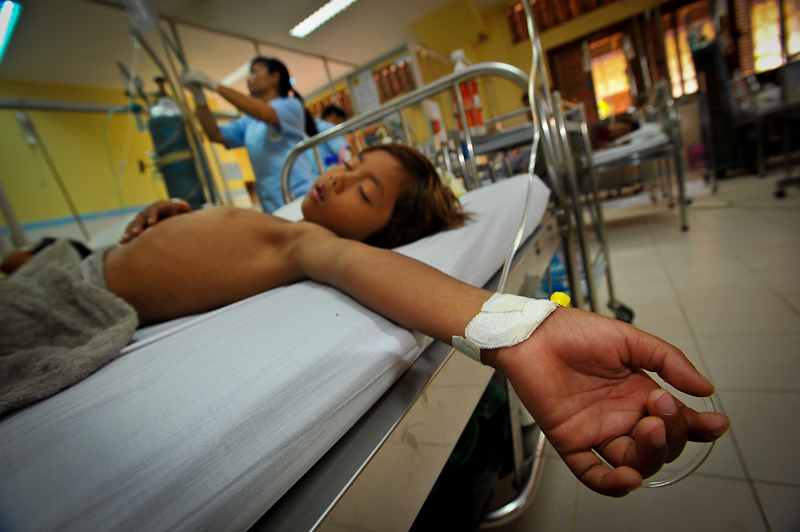
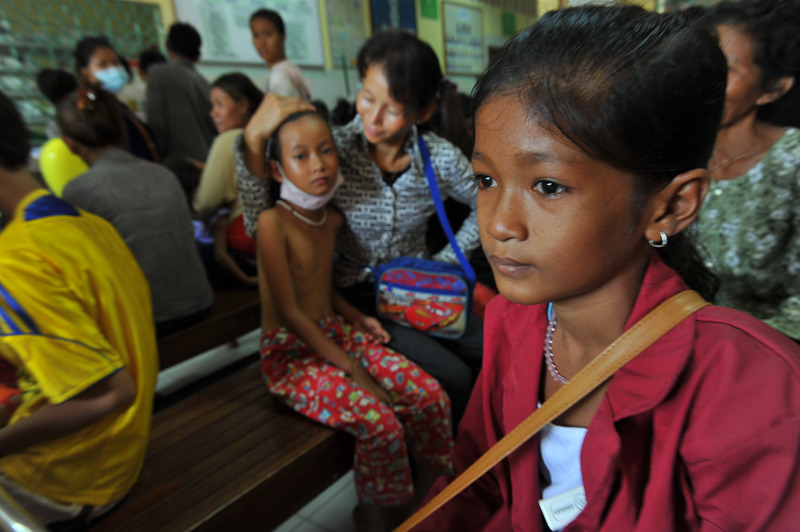



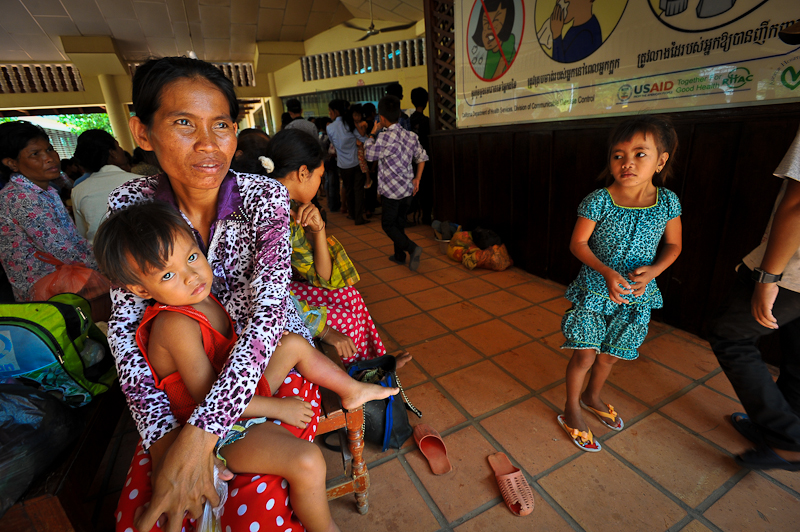

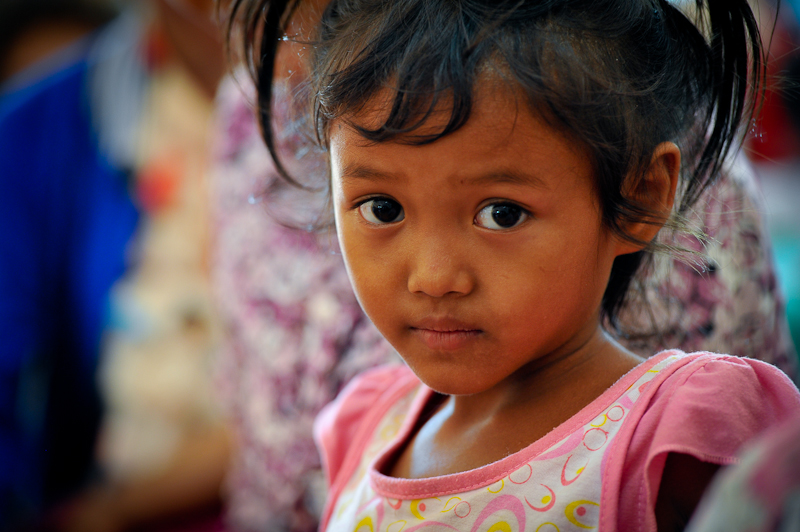
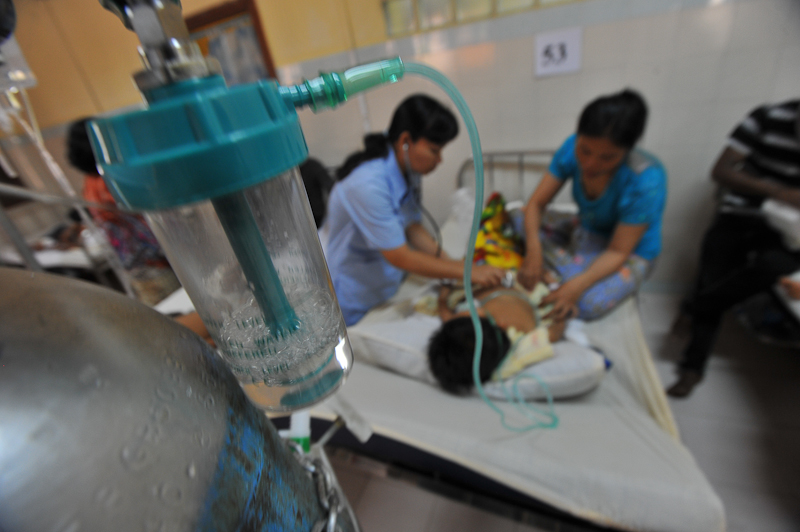
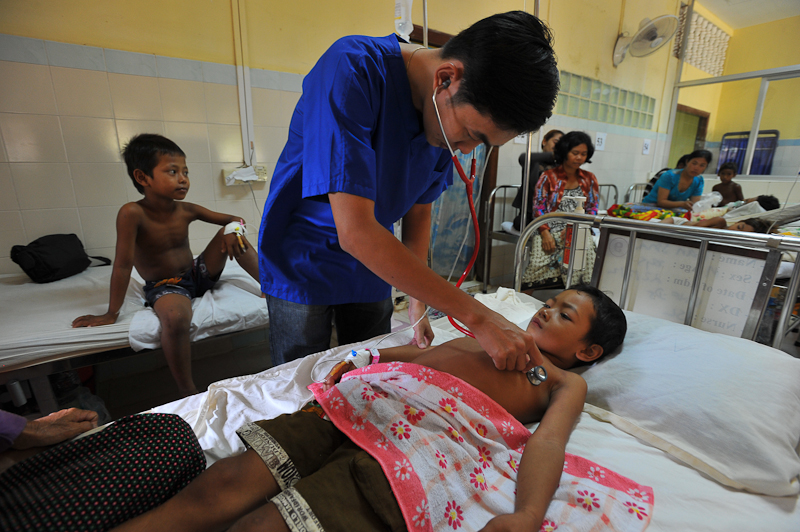

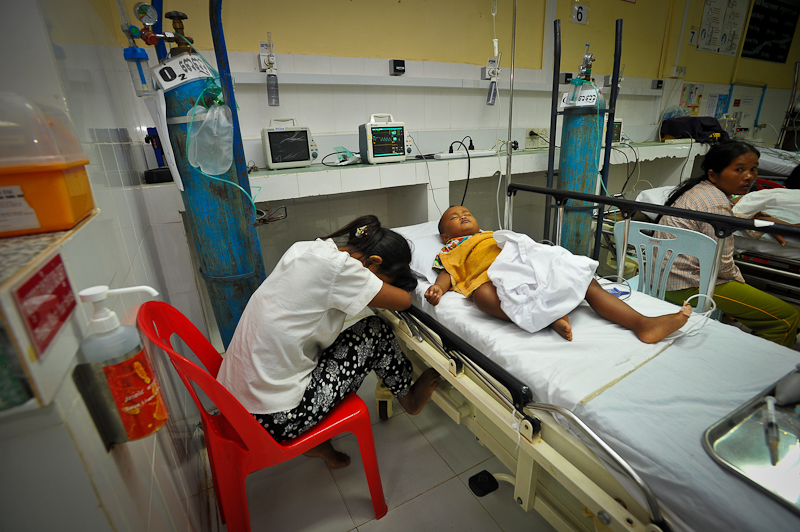




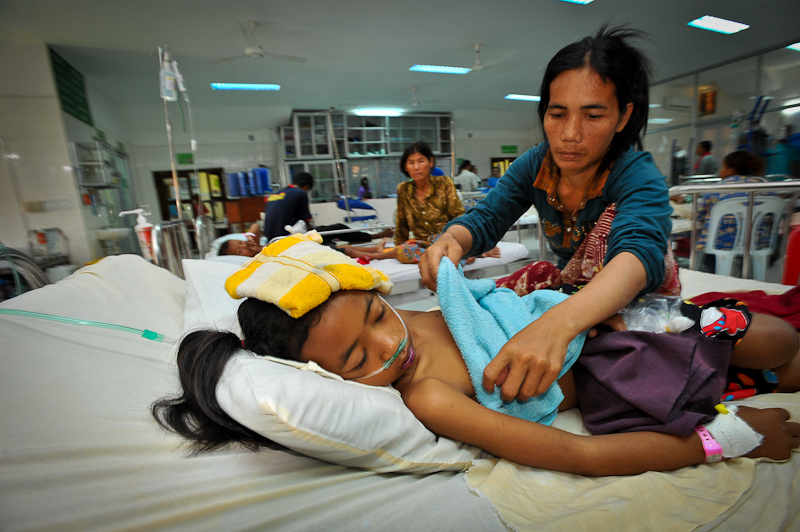
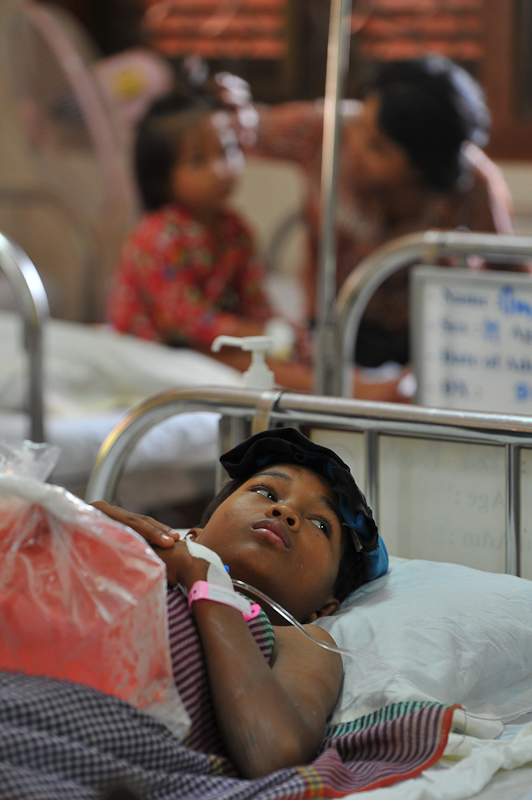
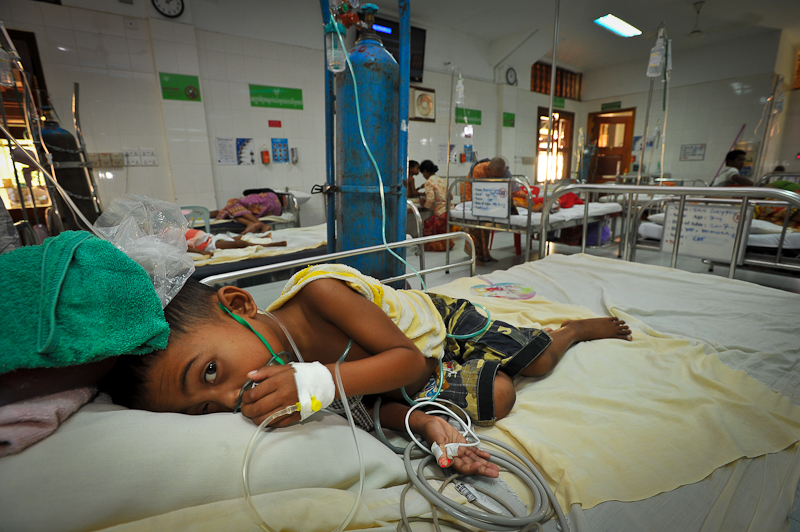
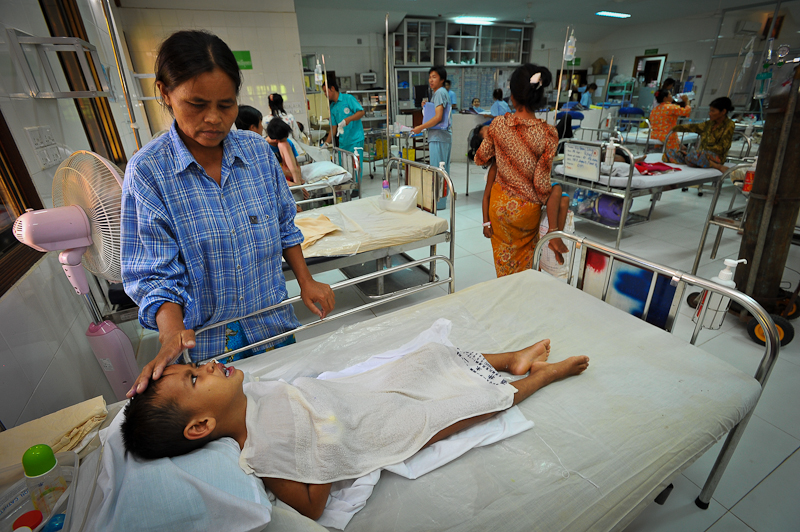

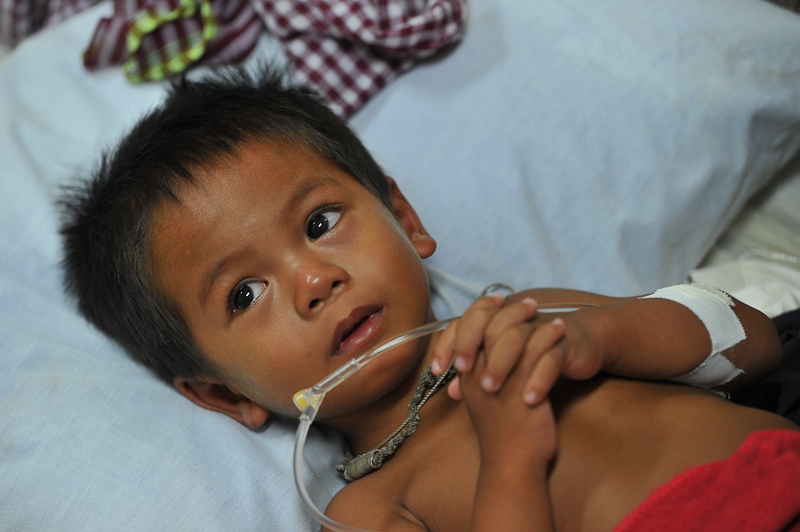







I’ve been reading about this, and it is good to see the images that tell the story so well, not only from the perspective of the impact of the outbreak, but in the great work that AHC does. I’m teaching nursing full-time now, and my students are about to enter their pediatric rotation. I will share this with them so they can see what it’s like. Maybe they will be inspired to volunteer one day!
Keep doing what you do.
Thanks Mike, it’s great to hear from you! All the best with your teaching and your photography as well.
What an insightful article and wonderful pictures. Mike Iredale was my 4th semester clinical instructor and I still look to him for advice 🙂 My Microbiology presentation was on Dengue fever and yesterday, I found out that a girl friend of mine was diagnosed with Dengue fever after returning from a trip to Puerto Rico. I look forward to exploring your site and showing it to my mother (she is from Thaliand and returns often).
Compelling as always, Karl.
Inspiring work – AHC’s and yours . . . thank you for sharing it.
Inspiring, heartfelt portrayal of the ongoing health prevention and treatment challenges facing marginalised children worldwide. Beacons of Hope like AHfC play a vital role. Thanks for sharing..
Karl, you are a profoundly good man. Thank you for sharing news of AHC’s work and for documenting it so affectingly with your unparalleled skill. We love you, mister! CHRIS